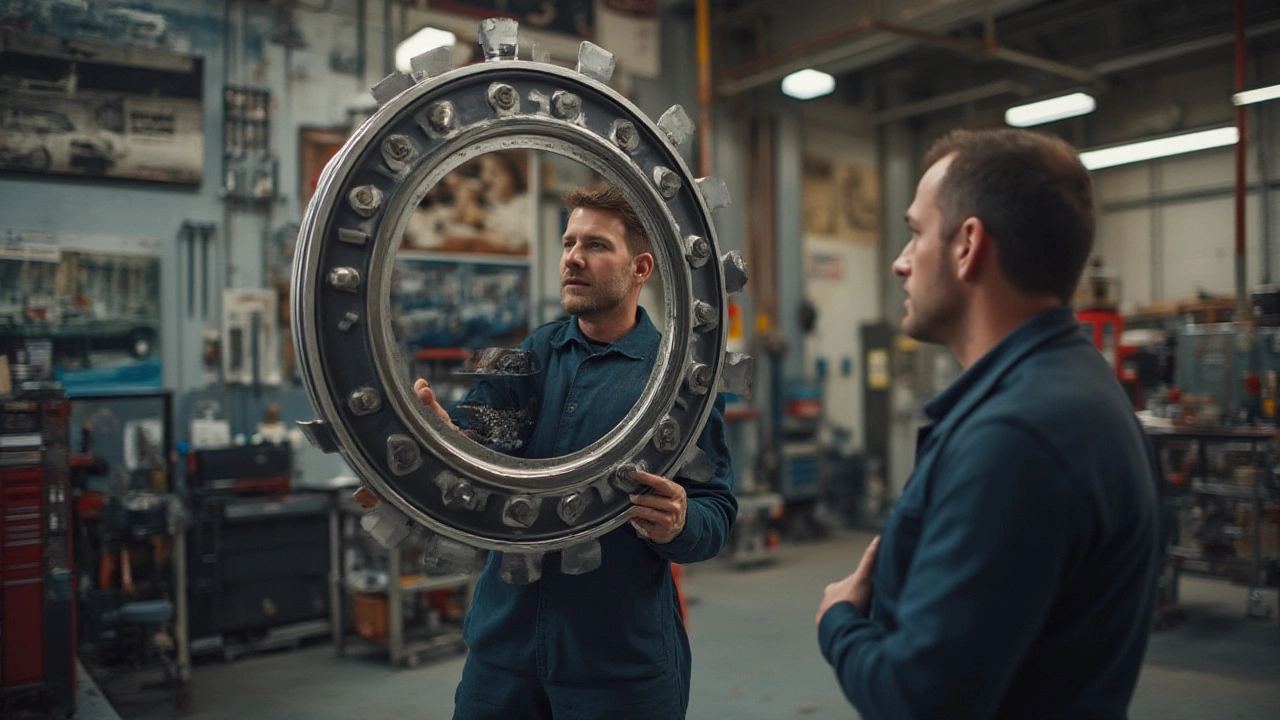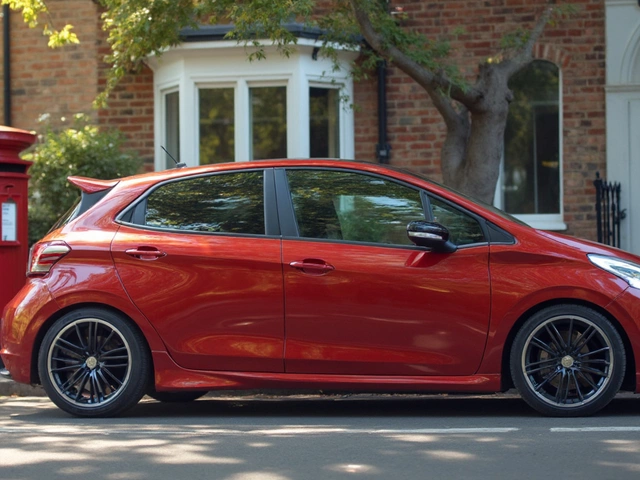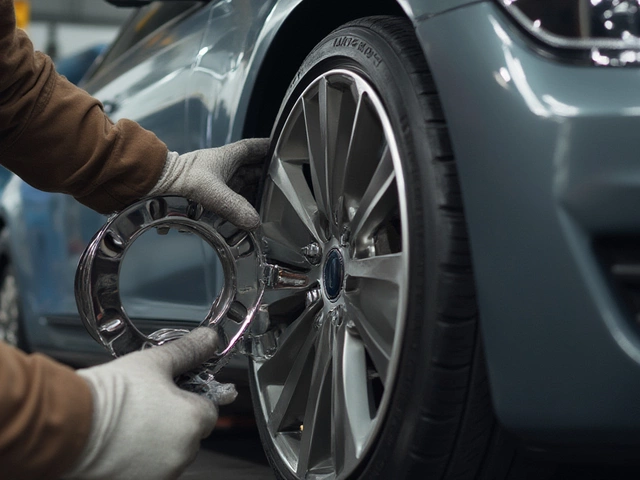If you've spent any time at your local car meet, someone has definitely given you an opinion about wheel spacers. Some reckon they make your car look tougher and give it a wider, meaner stance. Others swear they’ll shake your steering wheel loose, ruin handling, or snap your wheel studs clean off. So, do wheel spacers mess up handling, or are they just another mod myth that gets blown out of proportion? In real life, it’s rarely black and white. The details – and the difference between a fun drive and a nerve-wracking one – tend to hide in the in-between bits you don’t hear about on social media.
What Actually Are Wheel Spacers?
Think of wheel spacers as pancakes of metal that sit between your car’s wheel hub and the actual wheel. Their main job is simple: push your wheels outward, away from the hub. Most people use them to clear suspension parts, achieve a flush look with the guards, or make aftermarket wheels fit correctly when the offset isn’t quite right. There are two main types—slip-on and bolt-on. Slip-on spacers slide onto the studs, then the wheel goes on top; bolt-ons attach to the hub and give you extra studs for the wheel. Each has its place, and each can work safely if you pick the right thickness and material.
The thickness of a spacer is measured in millimeters, and even a small difference—a few millimetres—can change the way your car sits and drives. Most street cars see between 5mm and 25mm spacers. Too thin, and you might not notice a thing aside from aesthetics. Too thick, and you’ll get into all sorts of complicated territory with geometry and stress loads. In Australia, like most places, you’re supposed to stay within certain legal limits: 25mm is about the upper edge for road legality in Victoria unless you go through engineering.
The Impact on Steering and Suspension
This is the bit that gets people fired up. Bolt on 5mm spacers? You’ll hear “She’ll be right.” Go with 25mm? Suddenly, you’re copying drift builds and “ruining the scrub radius.” Here’s what’s happening behind the scenes: when you move the wheel further out, you extend the lever arm between the wheel and the hub. This changes the load on your wheel bearings—sometimes by a lot. Every extra millimetre multiplies the forces acting on your suspension parts, especially with heavy wheels or sticky tyres.
The steering gets affected as well. Spacers widen your track width (distance between left and right wheels), which can actually increase cornering grip—up to a point. But, a wider track also makes the steering a bit heavier and less nimble, especially if your car wasn’t set up for it. That extra width also shifts the scrub radius—the imaginary line the suspension and tyre trace as you turn. Changing the scrub radius can make your steering more sensitive to bumps, tramlines, or uneven road surfaces. Some people love the sharper response, but others hate the tugging sensation, especially in cities like Melbourne where tram tracks are everywhere.

Can Spacers Cause Safety or Reliability Issues?
No, wheel spacers don’t just make wheels fall off. But yes, people have had wheel studs snap and bearings fail—a lot of the time, it’s because something wasn’t torqued right, or dodgy, cheap spacers were used. The type of material makes a difference. Quality spacers are usually made from billet aluminium, which is strong but still light. Cheap ones from marketplaces can have inconsistent thicknesses or poor-quality metals, leading to imbalance or failure.
Weight is another angle. Adding spacers increases unsprung mass—the part of the car not supported by the springs (wheels, tyres, brakes, and a portion of the suspension). The heavier the unsprung mass, the less agile your suspension becomes. It won’t handle bumps as cleanly, and grip on bad roads can actually be worse. There have been controlled tests—like the 2019 TÜV SÜD study in Germany—that measured increased bearing wear and longer stopping distances when excessively thick or low-quality spacers were used. Nothing catastrophic unless you really go mad, but over time, it all adds up.
Here’s a tip: always check that your wheel nuts seat flush against the spacers if the spacer itself isn’t hub-centric (i.e. centers itself on the hub, not just the studs). Non-hub-centric spacers can cause vibrations and even make your wheels loosen over time. If you do drive hard, re-torque your wheel nuts after about 50-100km.
Daily Driving vs. Performance: What Actually Changes?
For daily use, a modest spacer — 5-10mm — won't turn your car into a handling disaster. You might notice a firmer steering feel, or the wheels sitting just that bit more flush with the guards (which always looks better, right?). With anything over 15mm, you may see more rapid tyre wear, a bit of wander on rougher roads, and if you go super-wide, an increase in mechanical stress on wheel bearings.
For spirited driving, there’s a benefit to that extra track width. Wider stance can reduce body roll and make the car feel grippier in bends. That’s why you saw Group B rally cars with wild-wide stances in the ‘80s—it worked for them, until the rest of their cars started shaking apart. Just know there’s a limit before things stop being fun and start being unpredictable. If your steering gets jittery or you notice new noises from your suspension, don’t ignore them—those are pretty good signs the spacers are too thick, or something’s out of spec.
Here’s a simple table, based on direct feedback from local owners’ clubs and known OEM specs, showing typical impacts for different spacer thicknesses:
| Spacer Size (mm) | Track Width Increase (per axle) | Common Impact |
|---|---|---|
| 5-8 | 10-16mm | Minimal change, better aesthetics, safe if high-quality |
| 10-15 | 20-30mm | Noticeable steering change, may feel firmer, double-check stud length |
| 20-25 | 40-50mm | Potential bearing wear, bigger steering effect, tyre scrub possible |
| 30+ | 60mm+ | Not street legal in most states, big geometry changes, high bearing stress |
Before fitting spacers, measure your actual hub depth and check how much thread will still engage your wheel nuts. Anything less than 7 full turns is asking for trouble.

Tips for Getting Safe, Predictable Handling with Wheel Spacers
If you’re set on spacers, don’t just buy the first set you see online. Stick to brands with a good reputation—around Melbourne, that usually means H&R, Eibach, or Kyo-Ei. Go for hub-centric models to avoid nasty vibrations. Make sure your wheel studs or bolts are long enough; if you aren’t sure, ask your local tyre shop or check your car’s manual for recommended torque specs.
Pay attention to your car’s alignment after installing spacers. A wider track can slightly change your toe and camber, so it’s worth getting a wheel alignment right away, especially if handling is one of your top priorities. Watch out for rubbing—aftermarket wheel and tyre combinations can go from perfect to scraping arches, especially if you’re lowered.
Use spacers as an answer for fitment or minor stance tweaks, not a band-aid for offset issues so wild that a proper wheel would be a better solution. If you drive hard, re-torque the nuts after the first 100km or so. Listen for new noises, and if you notice any, sort them out before the next drive.
Legal advice in Australia: check your state’s regulations before installing. Victoria’s VASS engineers usually won’t pass anything too wide without safe evidence of fitment and impact on suspension and steering. And always keep your car’s track width within the limits—no one needs the drama with the cops wouldn’t let you talk your way out of.
Remember, every car is a little different. A 5mm spacer on a Toyota 86 might feel invisible, but the same on a classic Holden might be just enough to throw wheel geometry out. Always measure, check, and be ready to swap for a better solution if in doubt. Keep it fun, keep it tidy—that’s the street style way.




